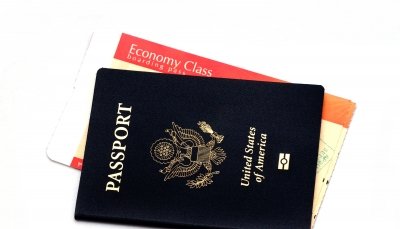 Have you ever wondered what the typical medical traveler is like? Or wondered what motivates them to travel for medical care? The answers can be quite varied – and often depend on the circumstances the individual is coming from – but there are some trends that we can observe overall. Here’s a look at the most common traits you might find in an American medical traveler.
Have you ever wondered what the typical medical traveler is like? Or wondered what motivates them to travel for medical care? The answers can be quite varied – and often depend on the circumstances the individual is coming from – but there are some trends that we can observe overall. Here’s a look at the most common traits you might find in an American medical traveler.
Profile of an American Medical Traveler
Which Americans would be most likely to travel for medical procedures? There are actually quite a few groups of people who would benefit.
For example, an American medical traveler might be someone who does not have medical insurance at all, such as someone who is self-employed and cannot afford to purchase insurance individually.
Or it might be someone who has insurance, either through an employer or individually, but needs a medical procedure that is not covered by their insurance plan. There are a lot of common procedures that often aren’t covered by regular health insurance, such as:
- Plastic surgery
- Fertility treatments
- Stem cell treatments
- Dental procedures
- Vision procedures
- Non-emergency cardiovascular procedures
- Bariatric or weight-loss surgeries
- Other weight loss programs
- Substance abuse programs
Another possible profile of an American medical traveler is someone who has insurance, and could get the procedure done at home, but the insurance plan deductibles and/or total out of pocket costs are so high that it’s still advantageous to travel for the procedure to save money. This person may be simply looking to save money overall without sacrificing quality of care. And they get to travel abroad at the same time!
Or it might be someone who needs a procedure that is not yet FDA approved in the US. For example, a new procedure that’s not yet available in the US is the PneumRX Coil System—a new treatment for emphysema that is available in other countries, but not yet in the US.
Or it could be someone who is looking for an expert second opinion. This cohort is quite small because often would-be medical tourists will seek a second opinion closer to home, but with growing trust in international facilities – especially those who specialize in specific procedures – it could become more common over time.
Or it could be as simple as someone looking for provider accessibility, convenience, and quality in their healthcare. In some countries, it’s more common to have a more personal touch with medical care, even speaking with surgeons on the phone when you have questions. It’s also common in some medical tourism settings to have everything covered and planned out in advance, such as transportation to and from everything—the logistics scheduling alone is a big benefit that some people are realizing may be worth the cost even if the procedure would have been covered at home. Additionally, post-operative care is usually included in the package price, whereas at home it may be on top of the price of the treatment, making the at home total cost higher than anticipated.
Last but not least, an American medical traveler might be someone looking for a faster turnaround time. While waitlists are not as common in the US as they are in Canada, it’s certainly not unheard of to have to wait weeks or months for non-emergency procedures. For certain groups in the US this is a growing concern. One such group is war veterans who are served by the Veterans Administration (VA). With limited VA healthcare facilities, long waits are becoming much more of a problem for this cohort. For those who can pay out of pocket, it can be beneficial to skip the wait by traveling for the procedure.
Image courtesy of Arvind Balaraman at FreeDigitalPhotos.net

